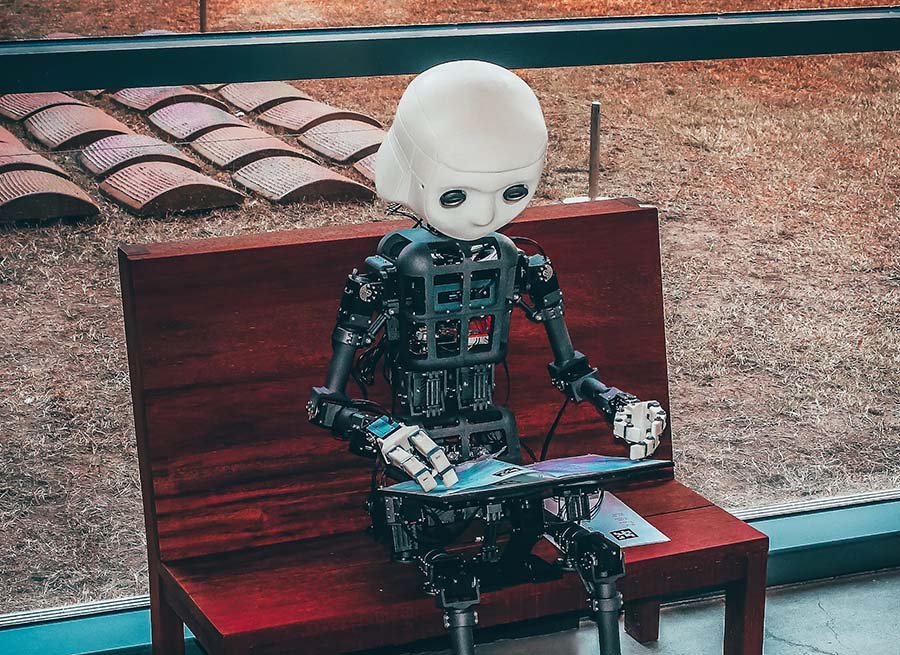The advancements in technology and human ingenuity are unstoppable and a powerful combination.
Have you heard about Artificial Intelligence (AI)? It is a trending, life-changing tool to people’s lives. It brings us a transforming lifestyle because of its ability to materialise human-machine interactions (HMIs).
Added to it is the existence of Machine Learning (ML), a technical term that could be clearer. In essence, it is part of the AI system and technology subset. Each has a certain focused functionality that sets them apart.
So, to gain a clearer understanding of AI vs machine learning, this article will walk you through how they work.
What Is Artificial Intelligence?
Interactions between machines and humans are finally made come true from being a fantasy, as depicted in fictional movies. The power behind it is called AI, which stands for artificial intelligence.
AI runs through machines that are turned into intelligent pieces. With artificial intelligence (AI), these machines can understand requests, connect data points, make reasonings, observe, plan, and draw conclusions.
If you need weather reports, your intelligent device will render them at your fingertips. In fact, lots of businesses resort to AI technology for their major operations.
If you’re offering catering services through a “smart bot,” the invitations, reservations, and reminders are delivered amazingly to the right destinations and recipients. Your AI-powered device can even segment customers into groups to deliver targeted messages. In such a way, the response rate might increase.
AI does a multitude of benefits to the business. This period of new and high cognition levels truly brings a promising future.
AI and ML History
A humongous technology has combined to give birth to Artificial Intelligence (AI). Tracing back how it began is a nice way to start with.
Well, it did not occur like a single or few leaps in the chess game that self-driving cars emerged. Its history is linked back to military science and statistics, with contributions from maths, cognitive science, philosophy, and psychology.
The original intent was merely to set out computers to function much better with independent reasoning ability. Its birth dates back to a Dartmouth research project in 1956. The topics explored were problem-solving and symbolic methods. This interesting activity caught US Defense military attention and was pursued with a dense focus. Computers were put under massive training to mimic human reasoning. In view of this fact, machines were transformed into personal assistants in 2003 during its street mapping projects. This success intrigued large companies and encouraged them to do similar projects. Computers’ automation and formal reasoning power have grown popular in the following years of using AI.
Subfields of AI
As discussed, Artificial Intelligence is all about developing computers with a human brain-like processing system. As this branch of science progresses, many subsets are being developed that further enhance its functionalities. Below are its subfields.
Machine Learning

The conceptualisation of machine learning was patterned after a philosophical thinking that states, “Think big but start small”.
Machine Learning (ML) is focused on automating analytical model building. It uses statistics, neural networks, operations research and physics to find hidden insights from the data without laying the programming for conclusions. It depends on historical data to assess and create new output values.
Neural Network
This is another interesting subset of AI. It is a computing system developed through an idea that transpired out of the inherent behavioural performance of the brain’s neurons.
Neural networks are interconnected units that have a series of algorithms which functions like human brains naturally do. It responds to external inputs and communicates the processed information between units. This phase involves multiple passes to derive the meaning from the undefined data finally.
Deep Learning
It maximises neural networks, advanced computing power, and training techniques to handle a large amount of complicated data. Its common uses include image and speech recognition.
While computer vision uses patterns, deep learning deciphers what the picture or video is. It is best represented by driverless cars for being able to recognise and interpret the signs on the street, such as stop signs or pedestrians emanating from the lamppost.
Through deep learning, which uses natural language processing, human being and machine can provide interaction.
Computer Vision
This subset of AI largely depends on deep learning and works on patterns to derive the right information from digital images and videos. Its function is focused on identifying and classifying visual inputs. Then, it acts or suggests recommendations.
Natural Language Processing (NLP)
It’s a branch of science geared towards building machines that can understand and respond to inputs such as text or voice data the way we do. It uses linguistics modelled after human language in collaboration with deep learning and machine learning.
With NLP, the computer system can help business operations efficiency, employee productivity, and even in critical processing issues in the business.
AI and ML, Are They Different?
As discussed, it is clear to say that machine learning is a subset of AI. Machine learning is designed for learning and adaptation through experiences. On the other hand, artificial intelligence is a moving power within computers to make them perform tasks smartly.
Artificial intelligence uses machine learning, deep learning and other sophisticated techniques to solve actual problems. As a result, AI is getting closer to its ultimate and original goals, producing human-like machines that can interact with us daily. Indeed, several retail sites are auto-generated nowadays and are mobilised by artificial intelligence.
Conclusion
Artificial intelligence and machine learning complement each other for the common purpose of generating cultural and financial benefits. The interconnected devices powered by AI make our everyday lives convenient with the help of Internet technology. With these advancements, the world can produce abundant information that is helpful and innovative.
















